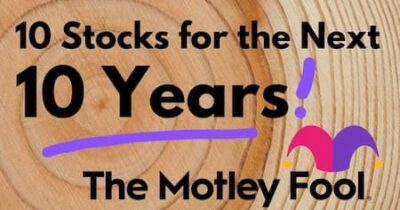You may have heard that investing in index funds is a good way to invest passively because indices are diversified across many companies. It works well when investors dollar-cost average into index funds, so they buy more shares when prices are down and fewer shares when prices are up.
Let’s take a look at the S&P/TSX Composite Index (TSX:^OSTPX) to see if it’s a good way to invest. You can’t directly invest in the index, but there are index funds that closely mimic its performance (and I’ll introduce one below).
What is the TSX Composite Index made up of?
After a huge run-up in the Big Five banks last year, the financials sector now makes up nearly 37% of the TSX Composite Index. The index also has meaningful exposure of 21% and 12%, respectively, to the energy and materials sectors.
The industrials sector makes up less than 9% of the index. The consumer discretionary, telecommunication services, consumer staples, utilities, and information technology sectors make up only 2-6% of the index. Healthcare makes up less than 0.6%.
That’s a high level of the Canadian market, and it’s probably not as diversified as you thought it would be.
Now, let’s zoom in on its top 10 constituents by market cap.
They include the big banks, Royal Bank of Canada, Toronto-Dominion Bank, Bank of Nova Scotia, and Bank of Montreal; the big energy companies, Enbridge, Suncor, TransCanada, and Canadian Natural Resources; the big railroad, Canadian National Railway, which falls in the industrials sector; and the big telecom, BCE.

Is a TSX Composite Index like fund a good way to invest?
The index has a heavy weighting in the financials and energy sectors.
Additionally, it has poor exposure to the consumer discretionary, telecommunication services, consumer staples, and utilities sectors. Investing in selective companies in these sectors can deliver a higher income in the form of dividends.
If income is important to you, you might consider investing in individual telecoms, such as BCE or Telus, and Fortis or Emera for utility exposure.
Doing so will allow you to generate yields of about 4-5%, which is a much bigger yield than iShares S&P TSX Capped Composite Index Fund’s (TSX:XIC) yield of 2.7%.
Specifically, this fund seeks to replicate the performance of the S&P/TSX Capped Composite Index, which is comprised of the largest companies listed on the TSX. The top nine holdings of this fund are the same as the TSX Composite Index’s top 10 constituents. Its top nine holdings make up nearly 37% of the fund.
Investor takeaway
Investing in a Canadian index fund such as XIC can be a good way to invest if you don’t like stock picking. However, if you own this fund, you should consider diversifying into other funds to fill the void — not just the sectors that it has little exposure to; consider funds that expose you to other markets.
For example, you can consider an emerging markets fund, such as Vanguard FTSE Emerging Markets All Cap Index (TSX:VEE) or a mid- or small-cap fund, such as iShares Russell 2000 Index ETF (NYSEARCA:IWM).
It also makes little sense to have little exposure to the technology and healthcare sectors when they’re the growth areas of tomorrow. And we have some great technology companies, including Shopify and Sierra Wireless.
However, they may be too expensive to consider after doubling in the last 12 months. Moreover, they don’t pay any dividends. For exposure to both the technology and healthcare sectors, investors can consider looking south of the border on the NYSE and NASDAQ. Some U.S. technology and healthcare companies pay healthy, growing dividends.








